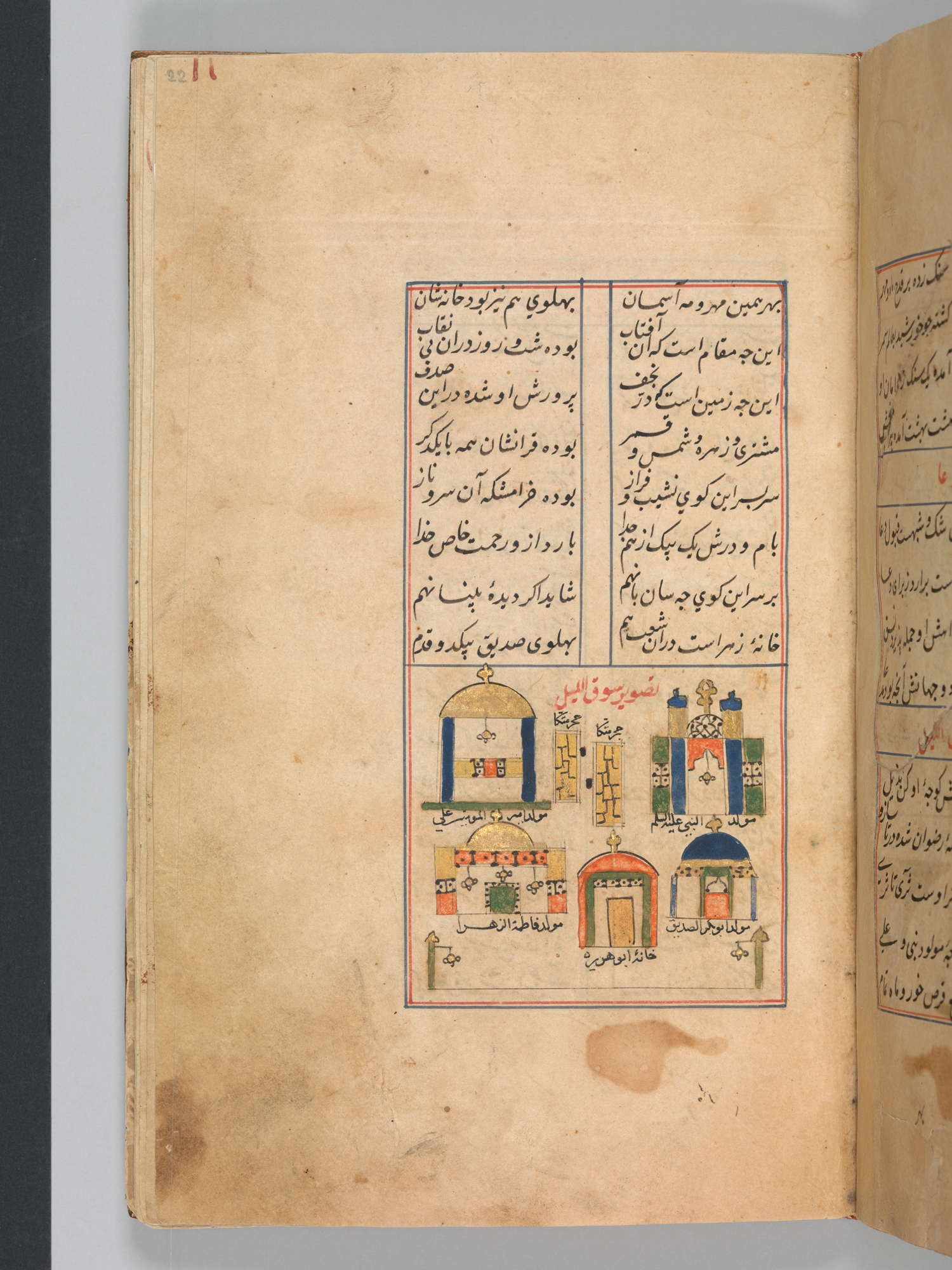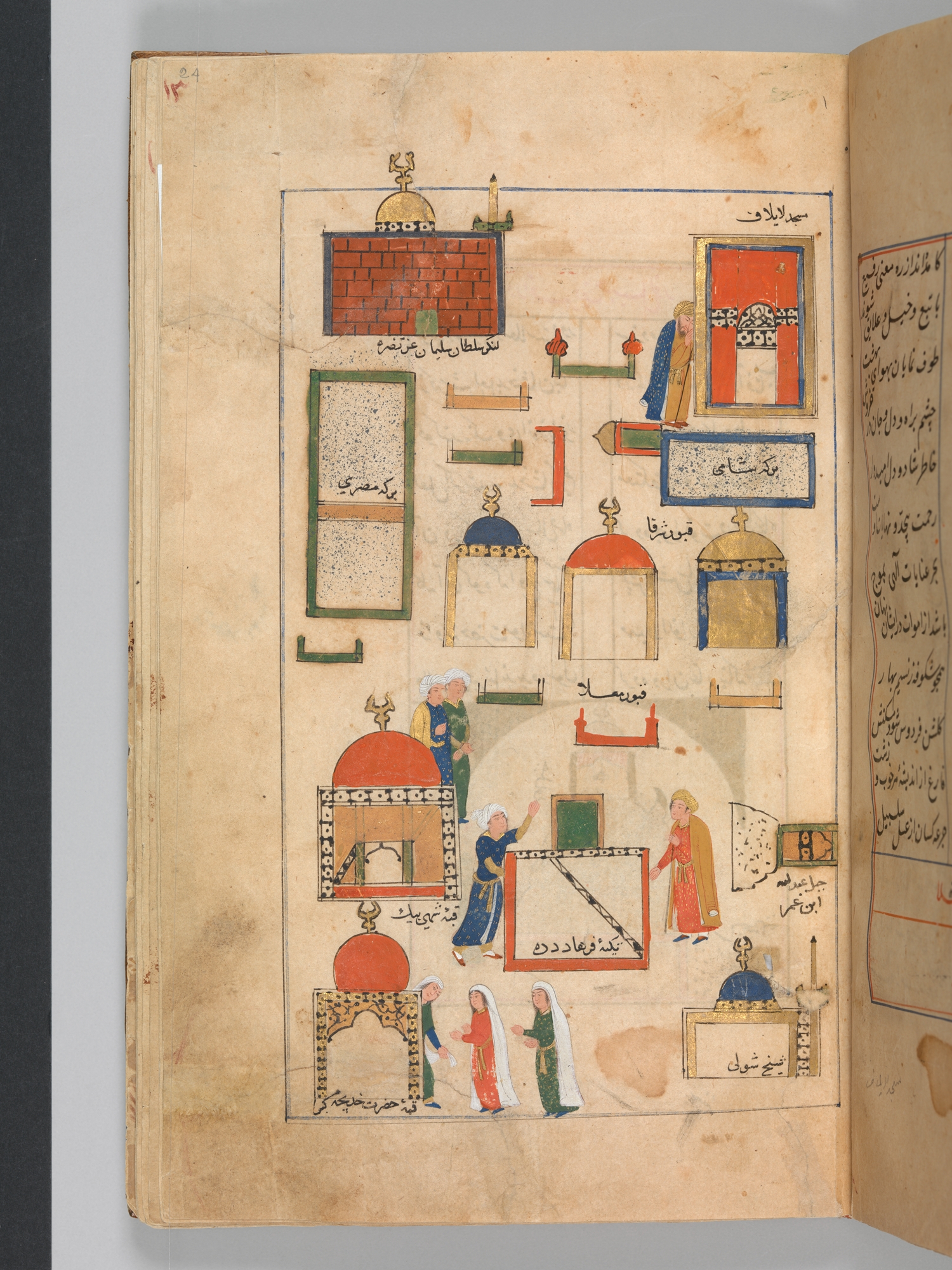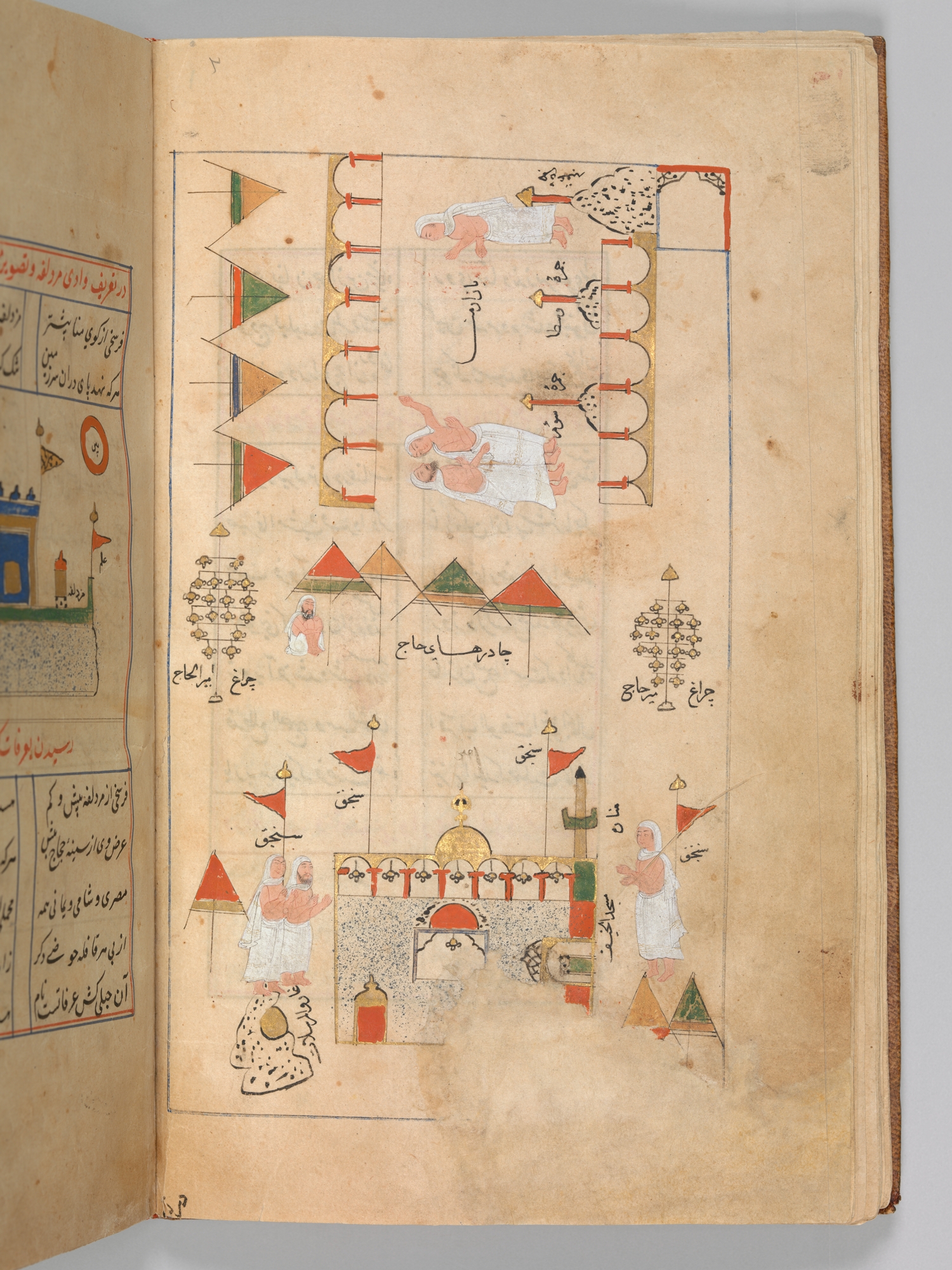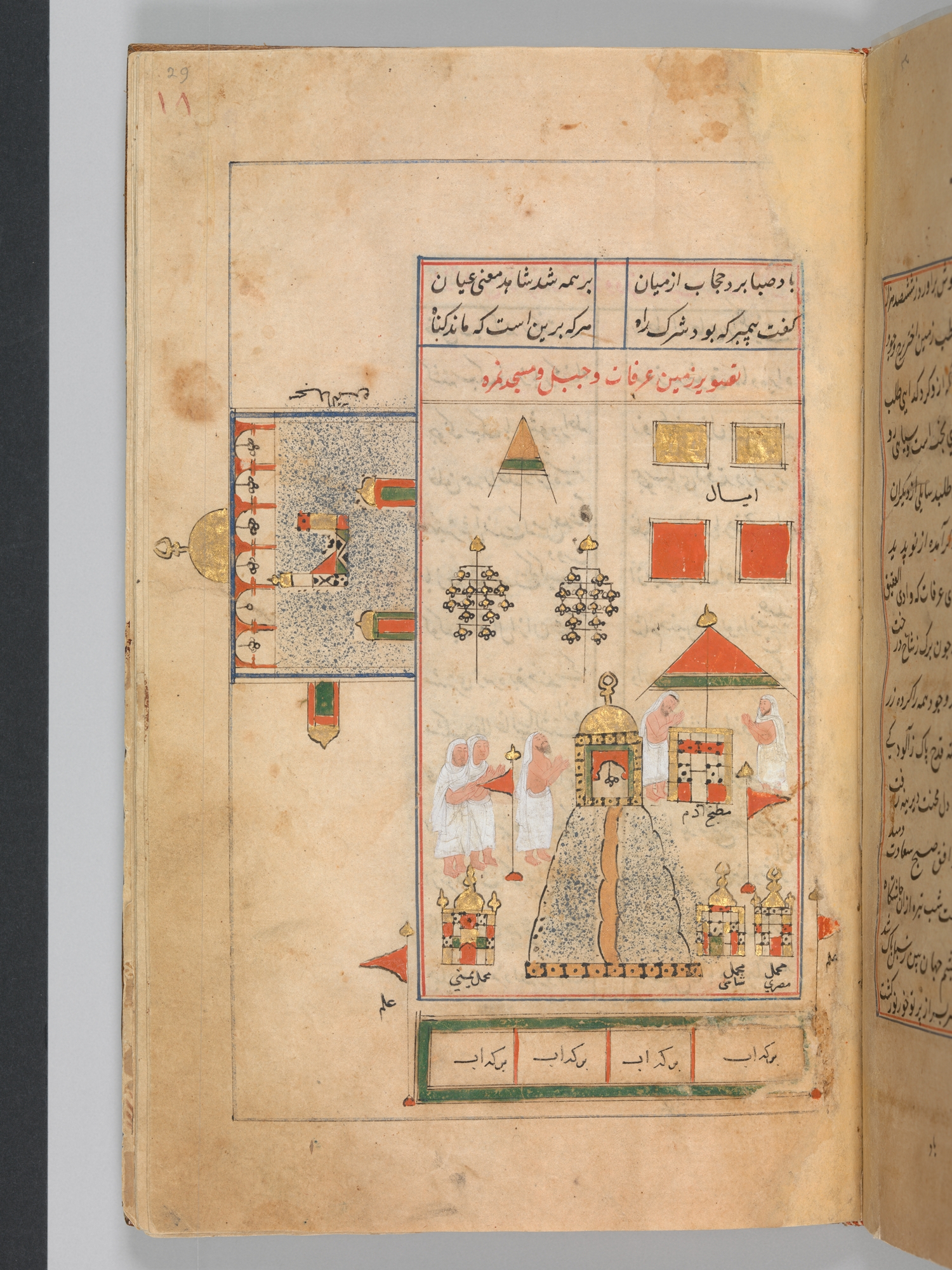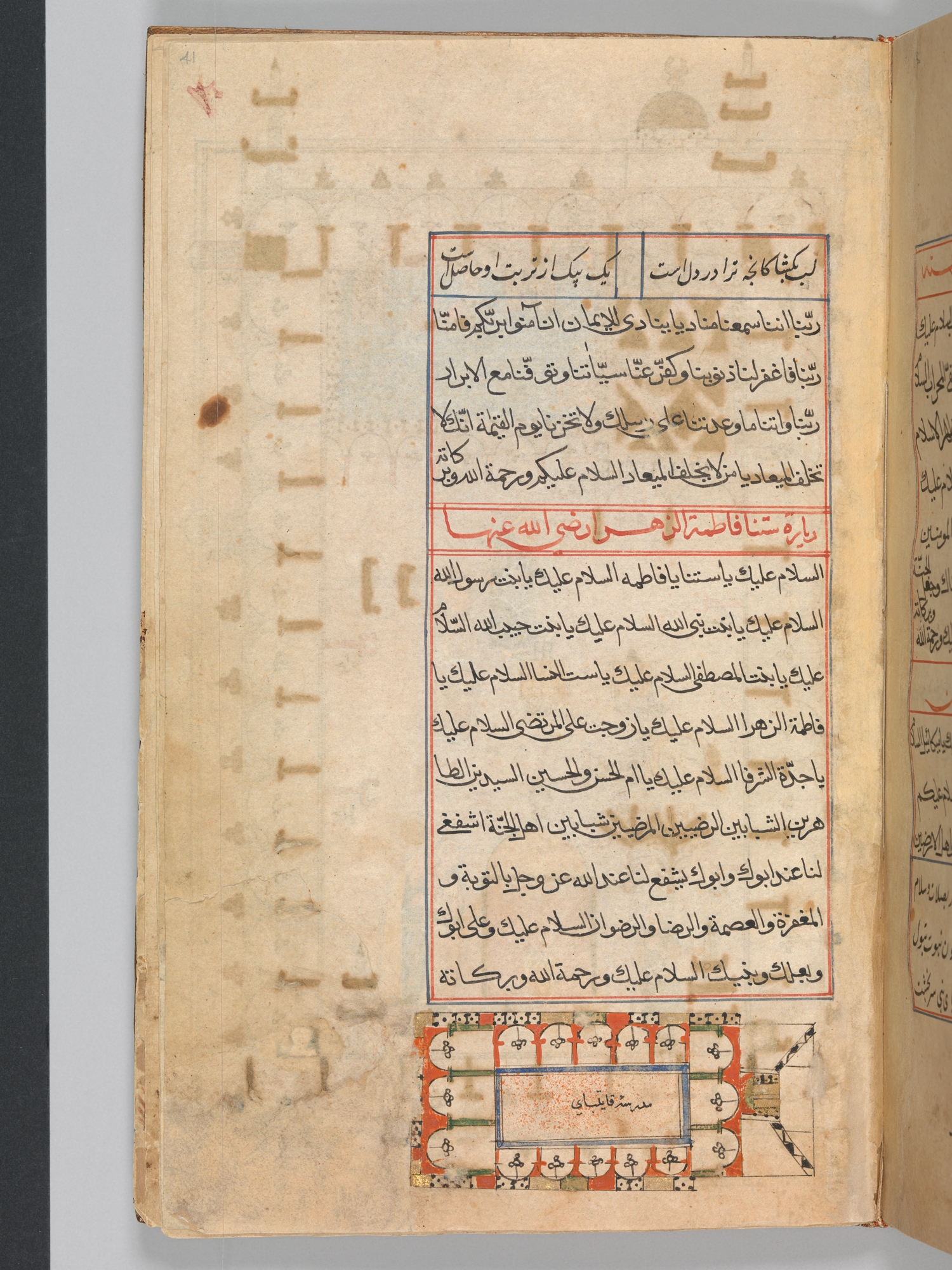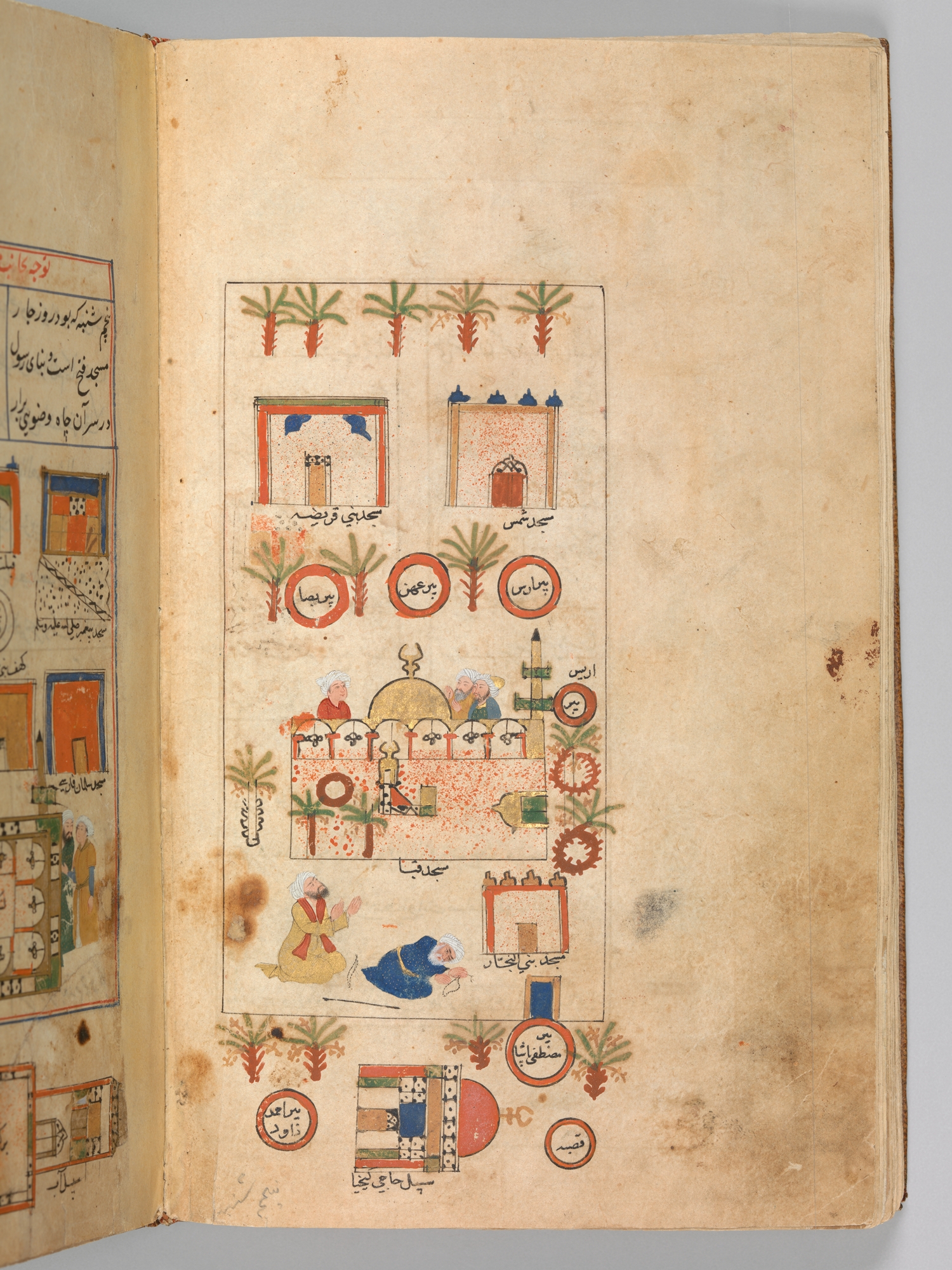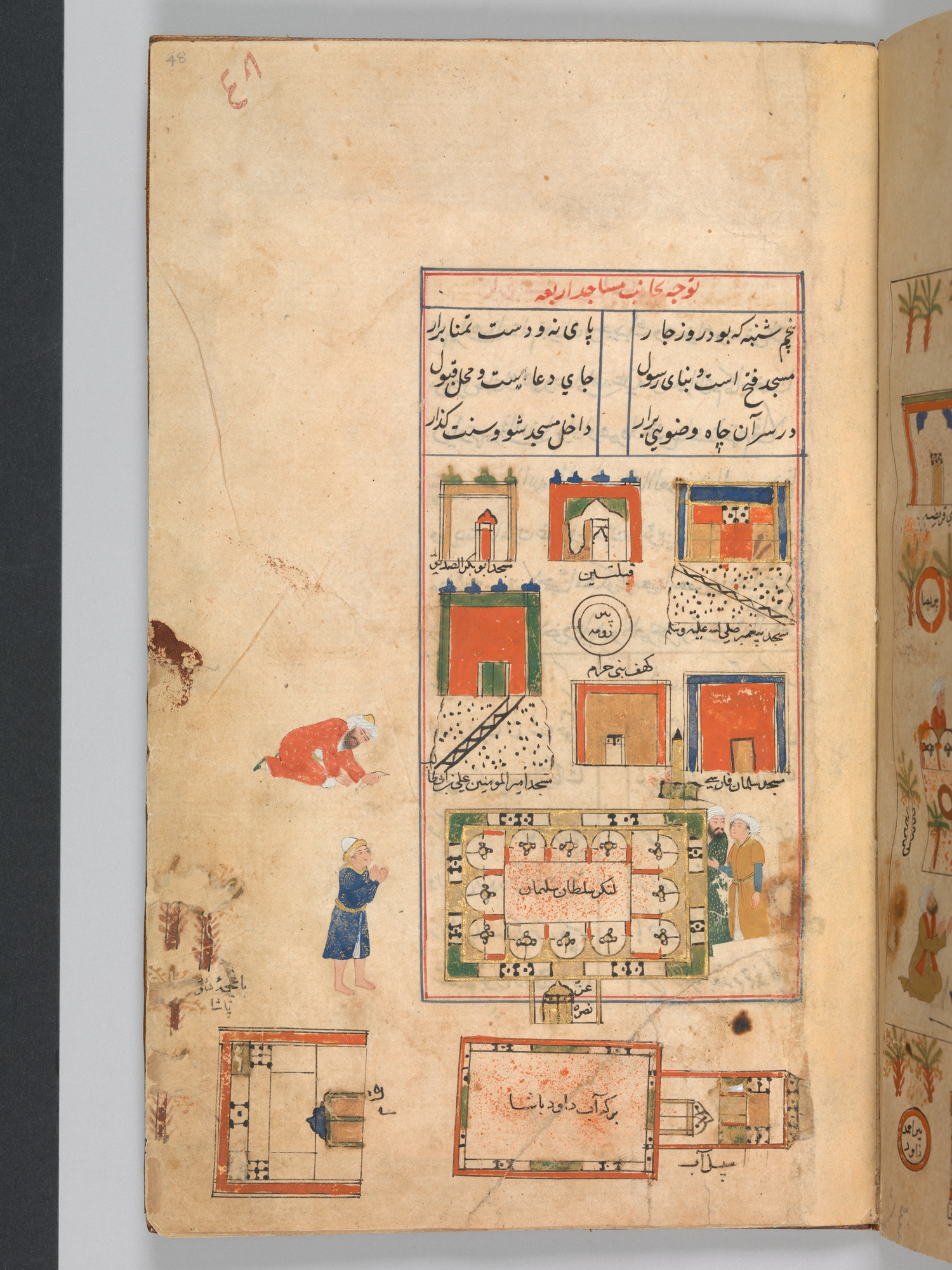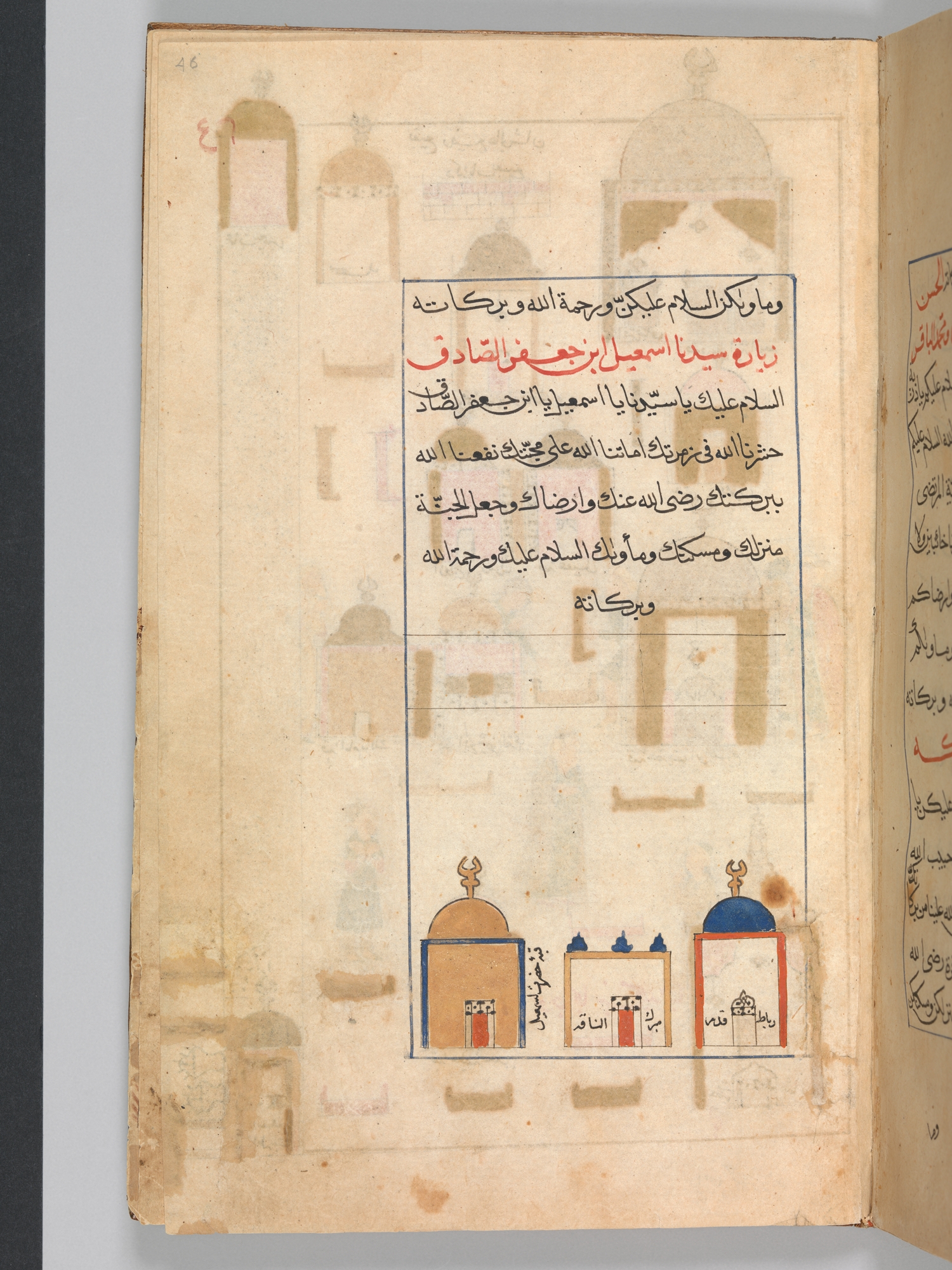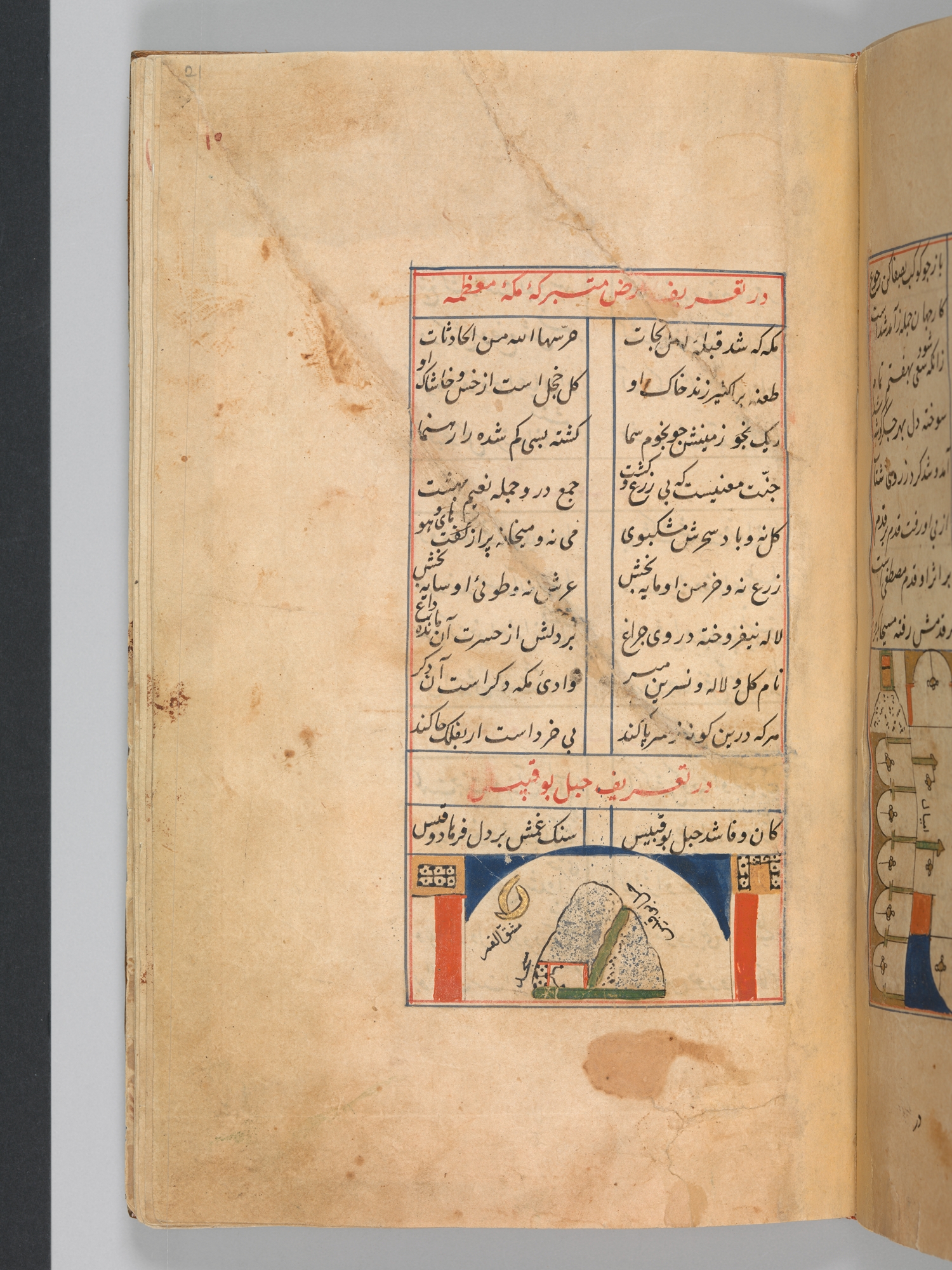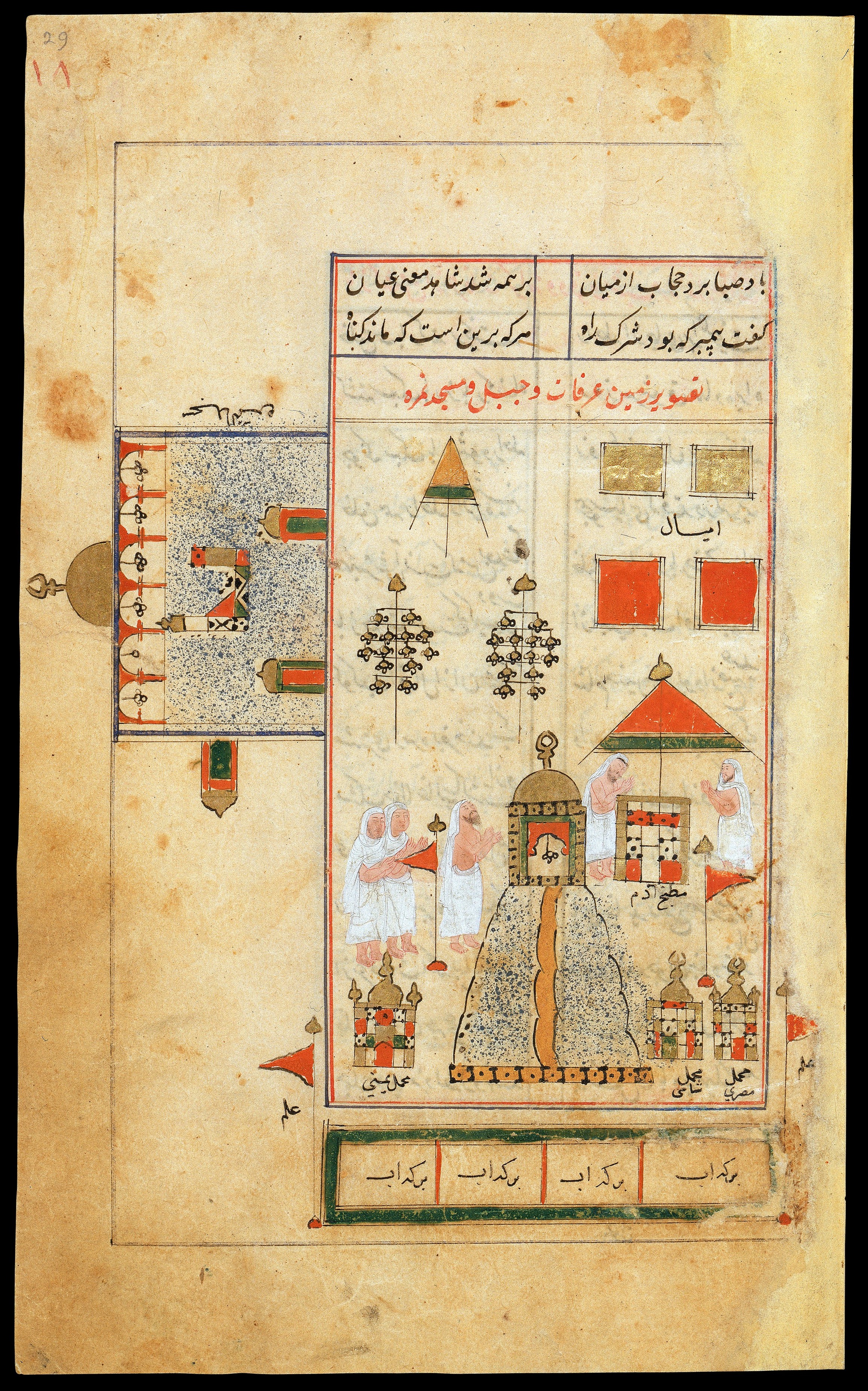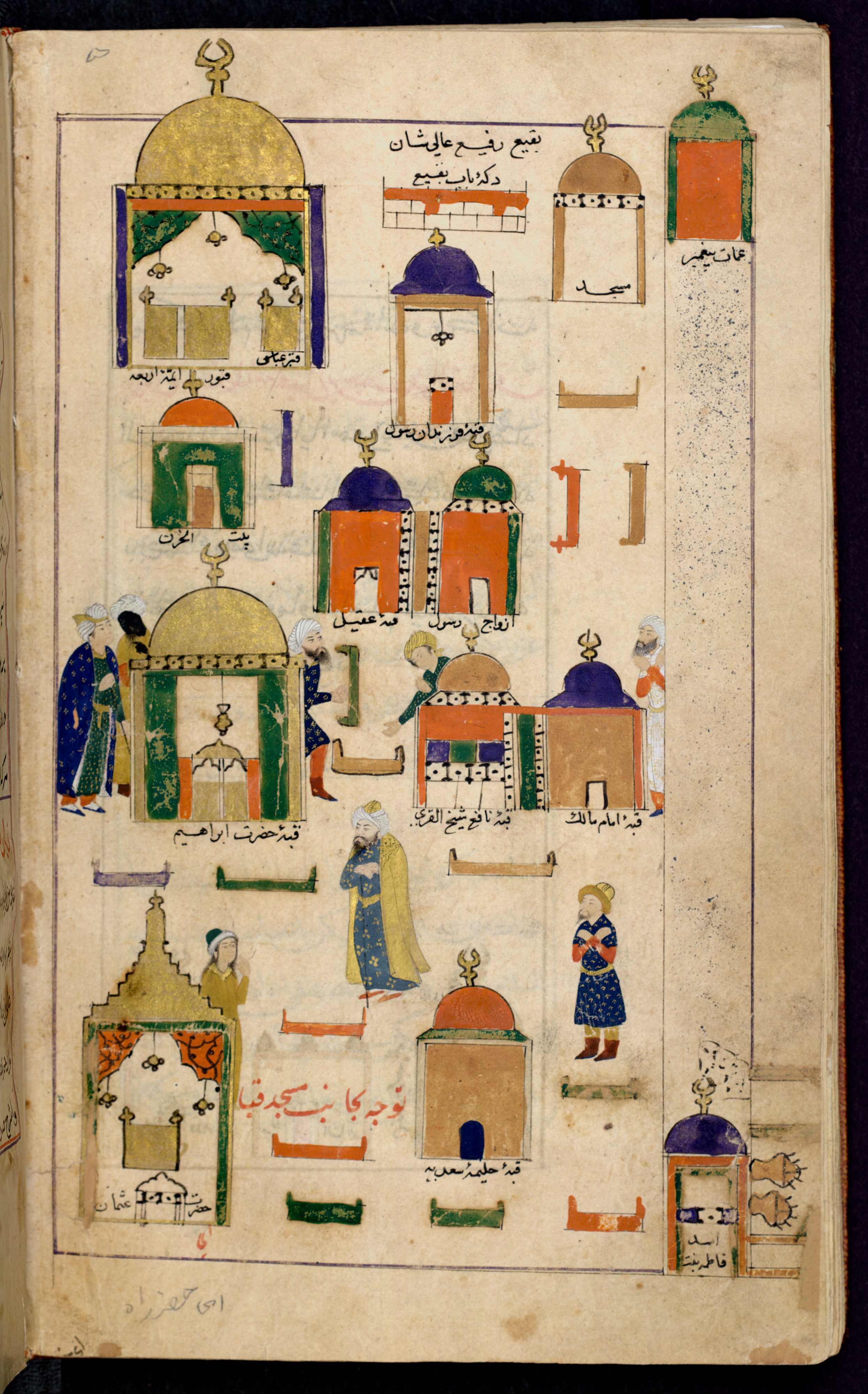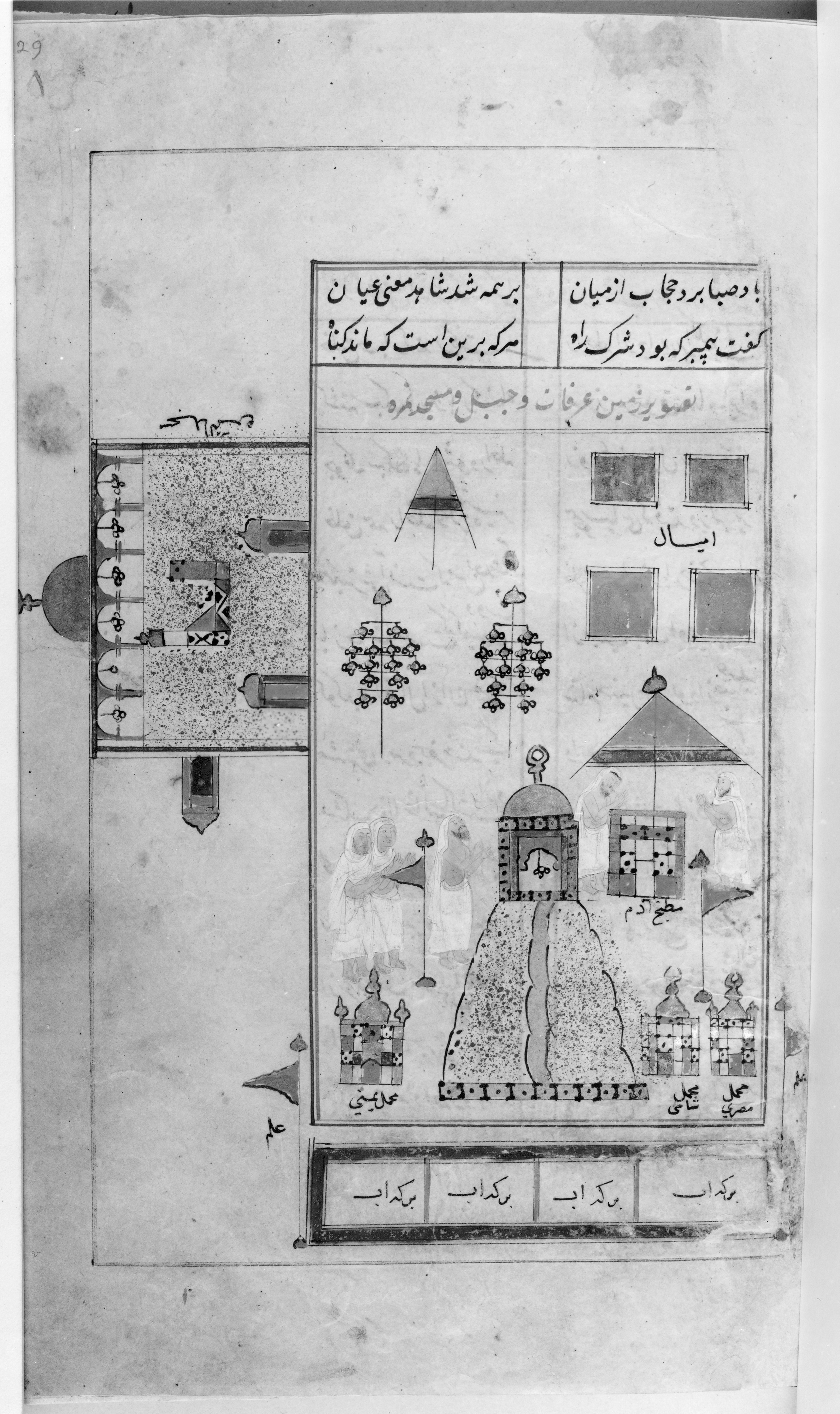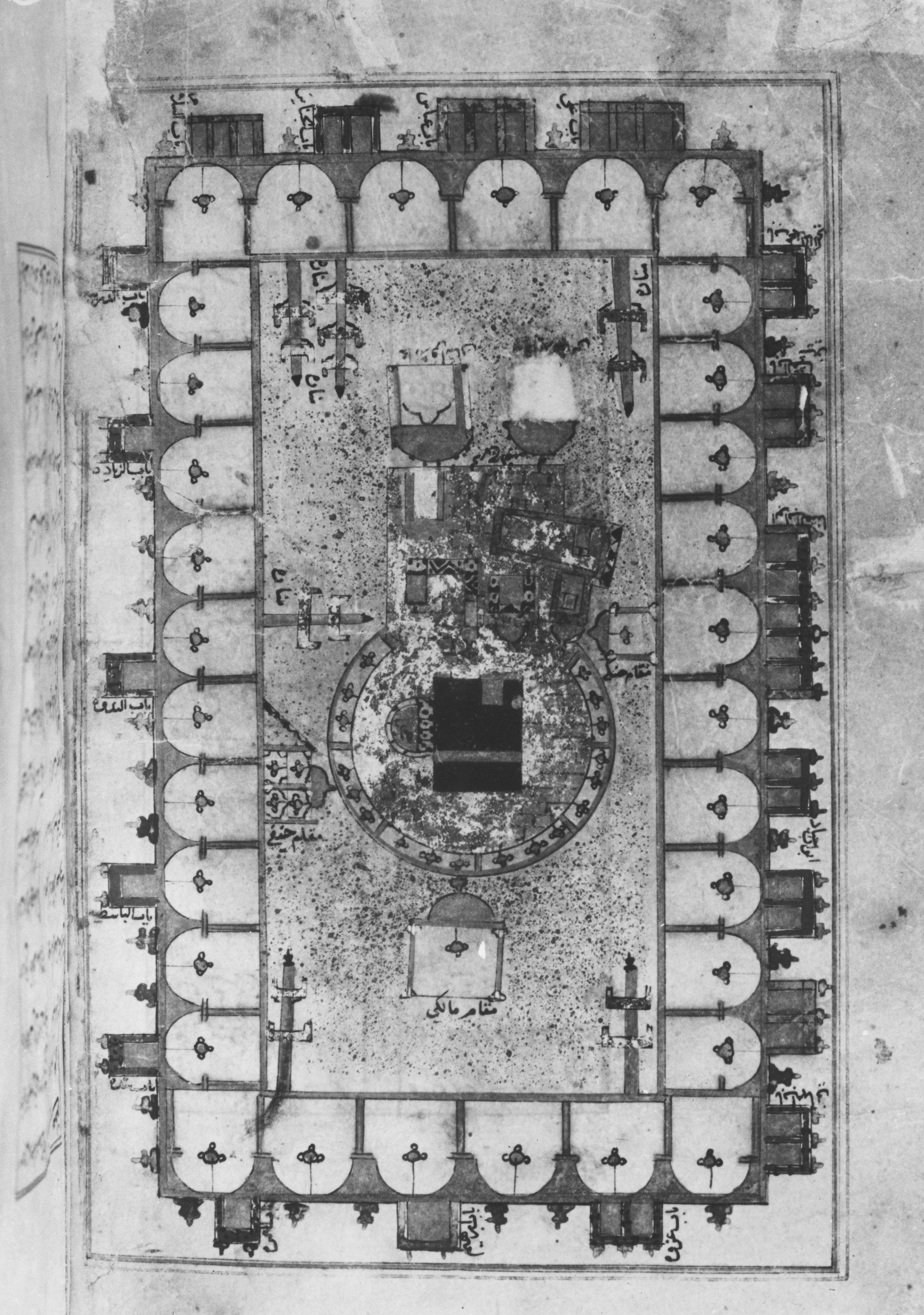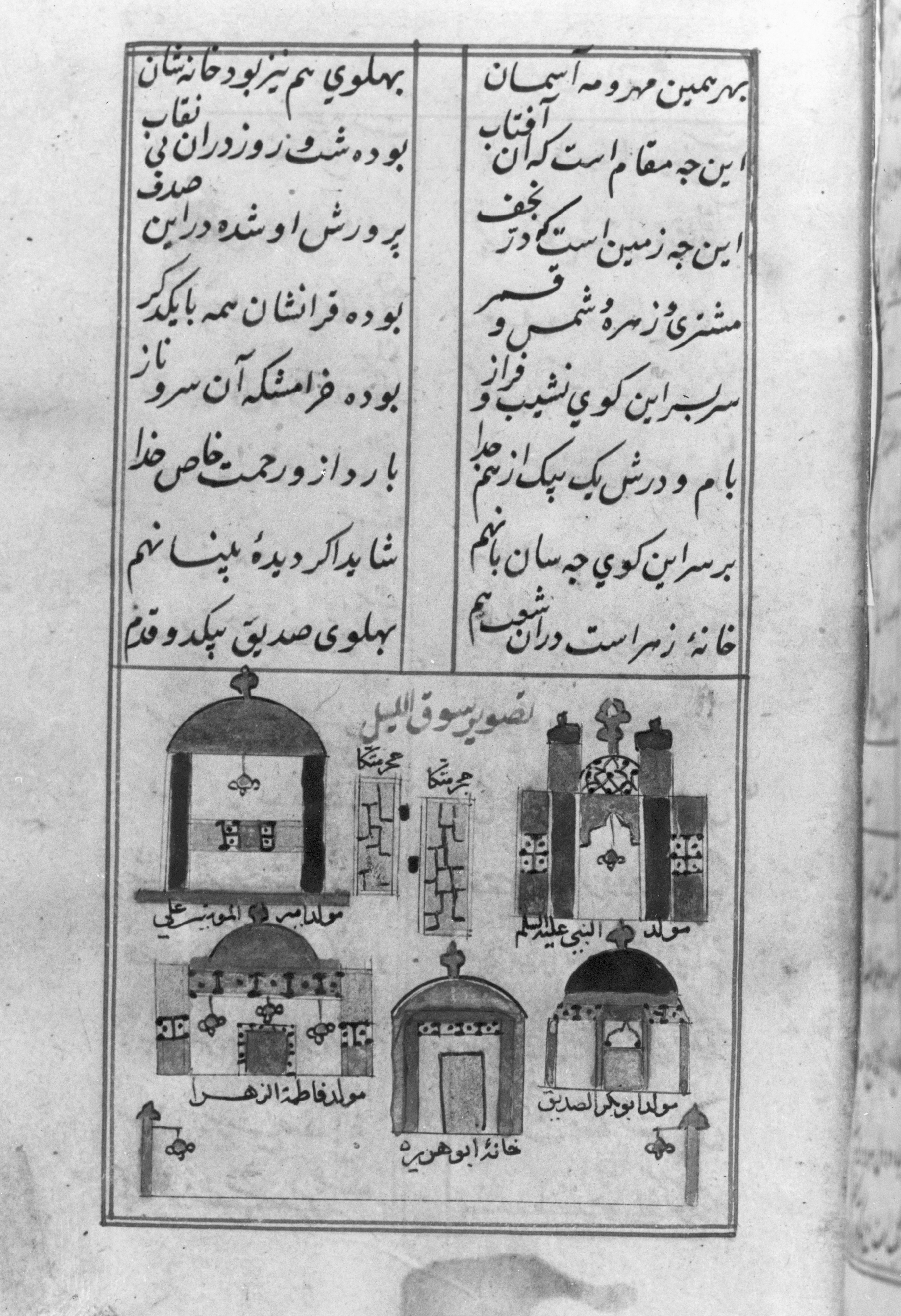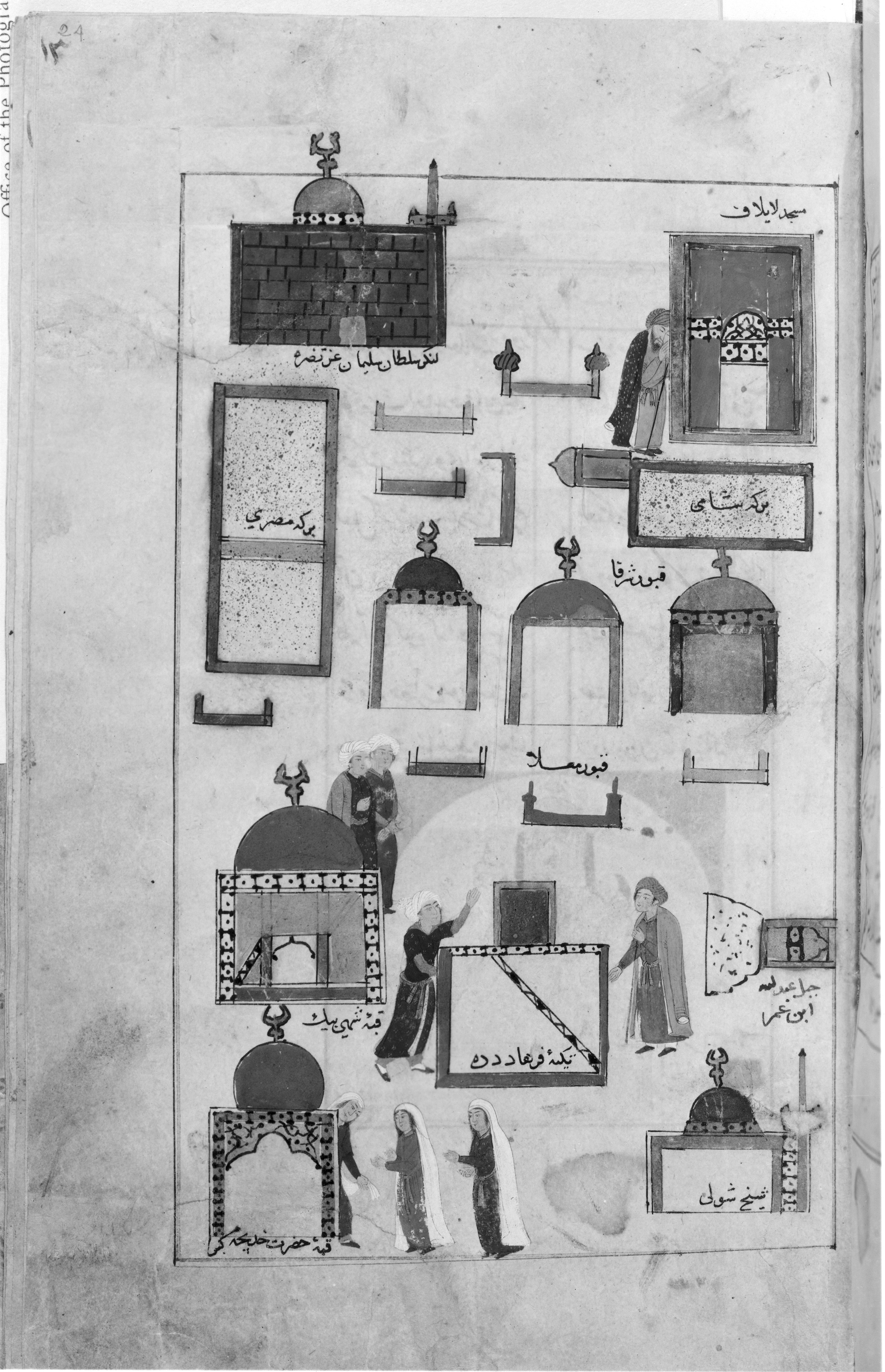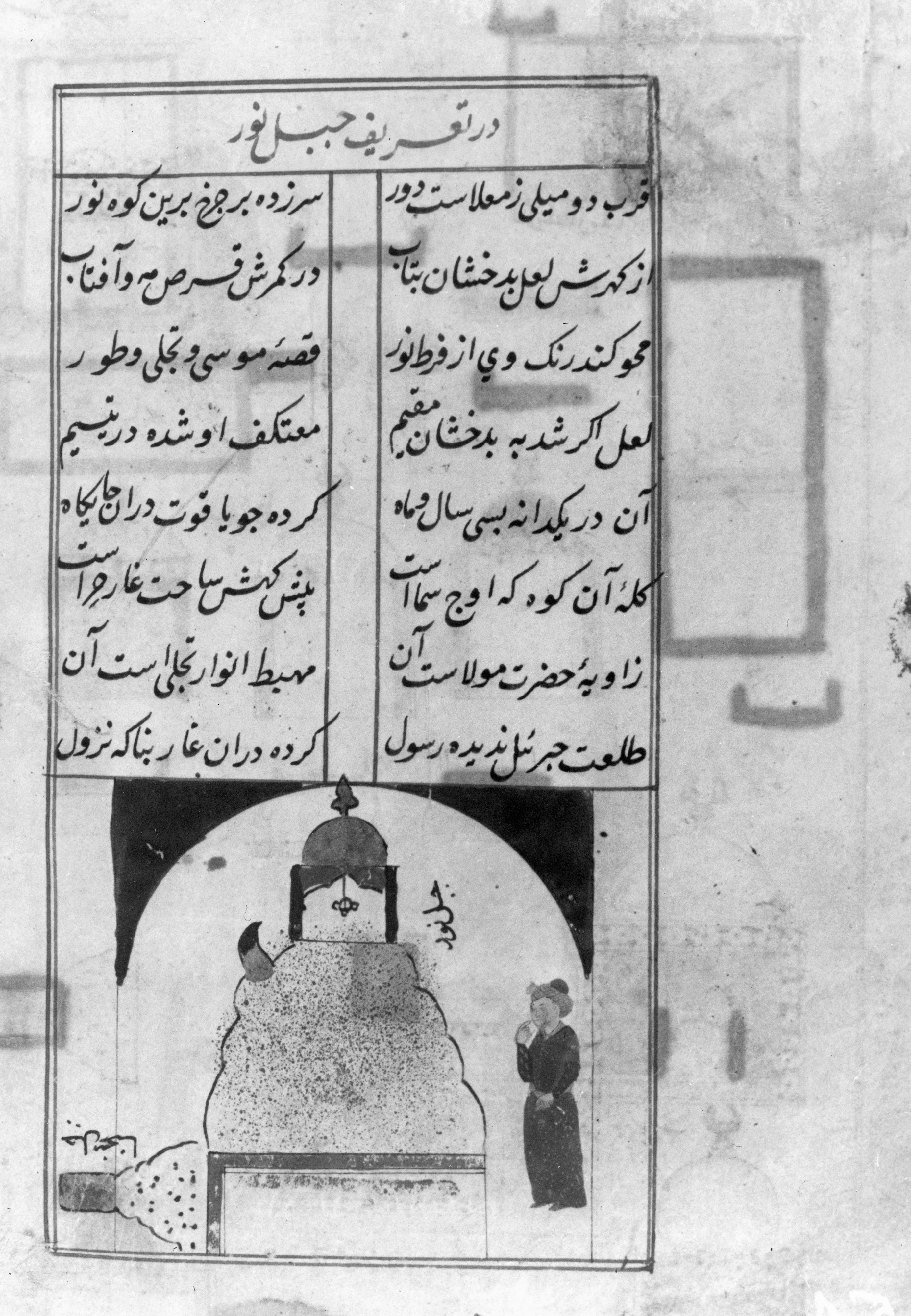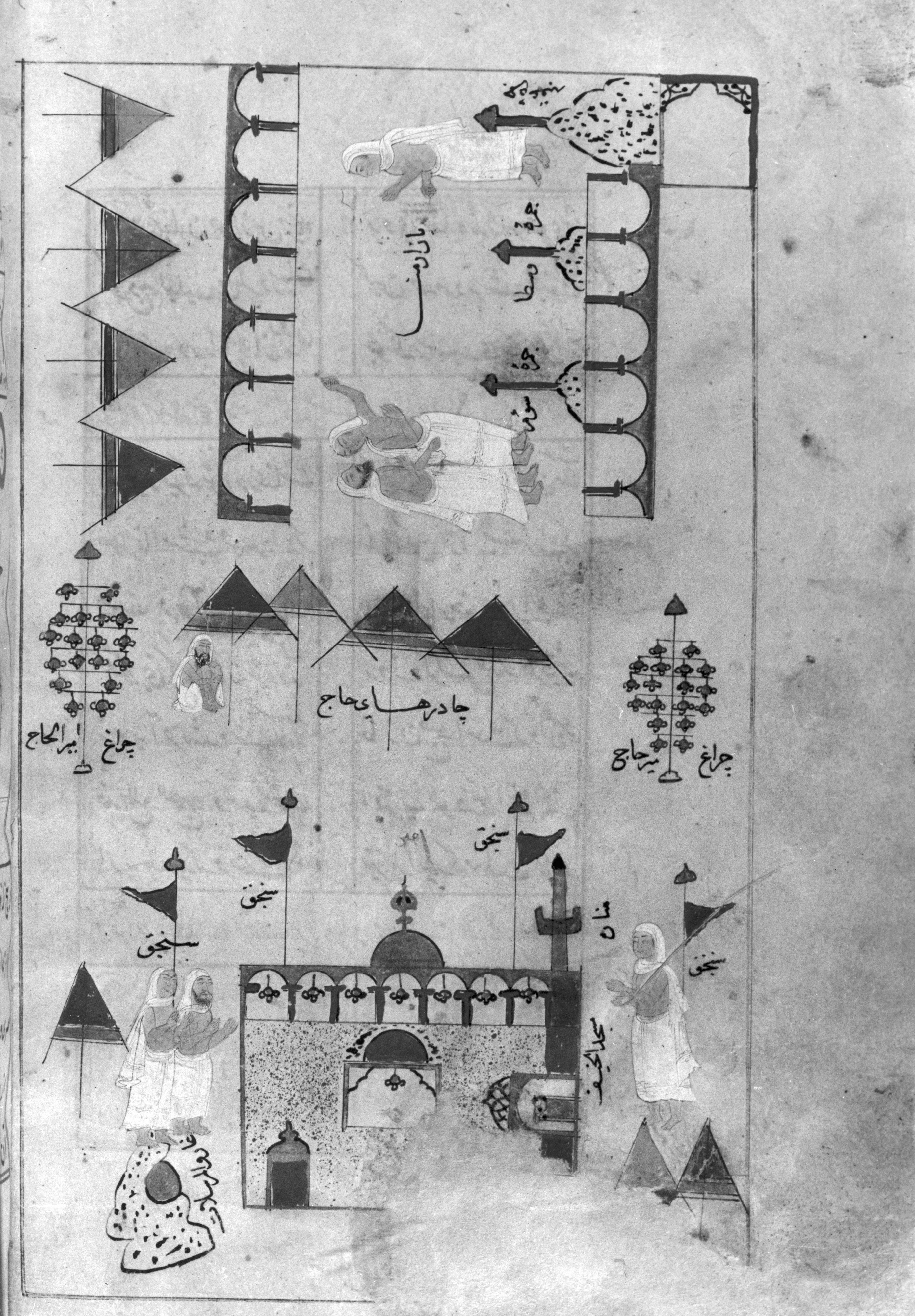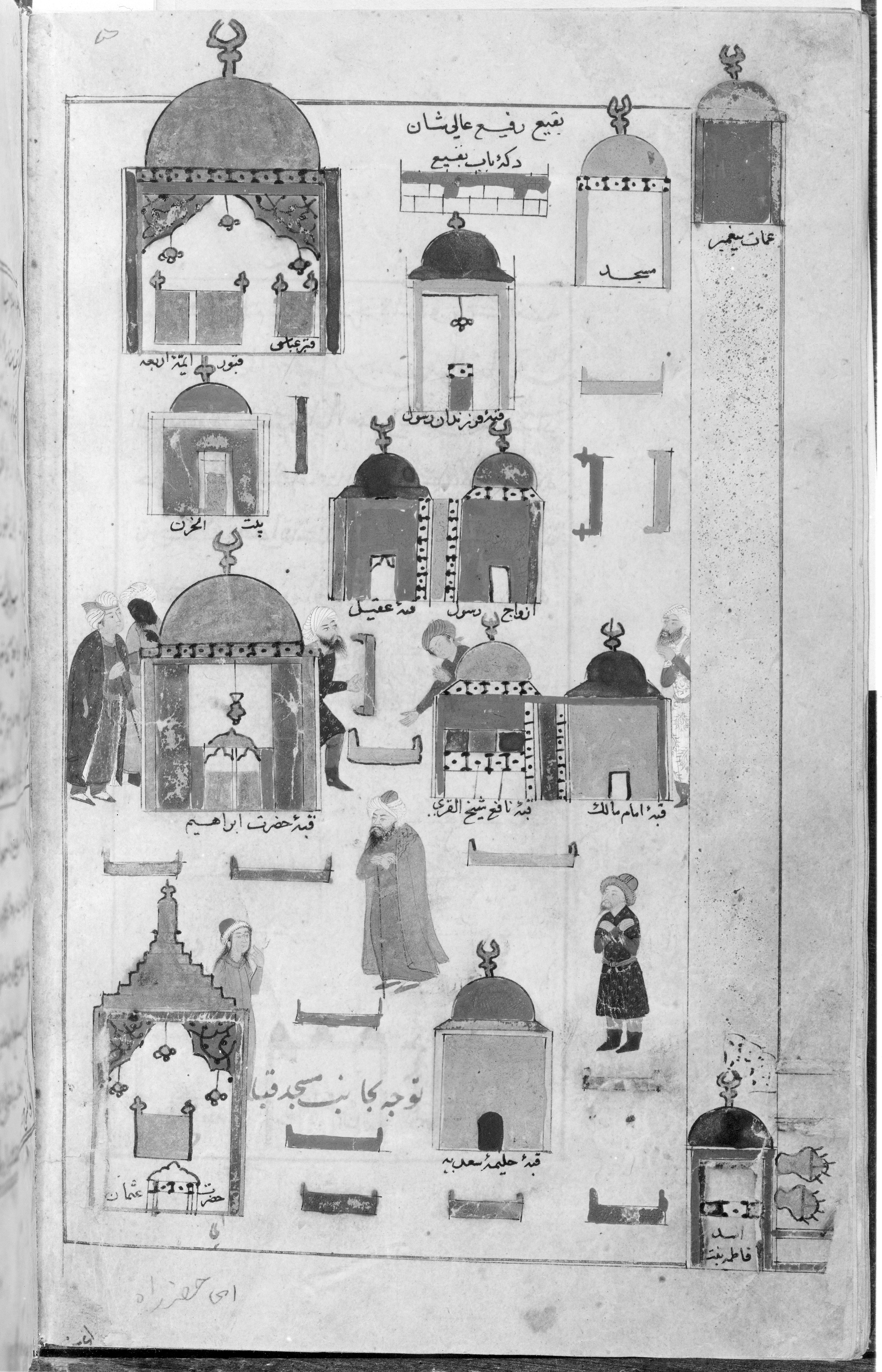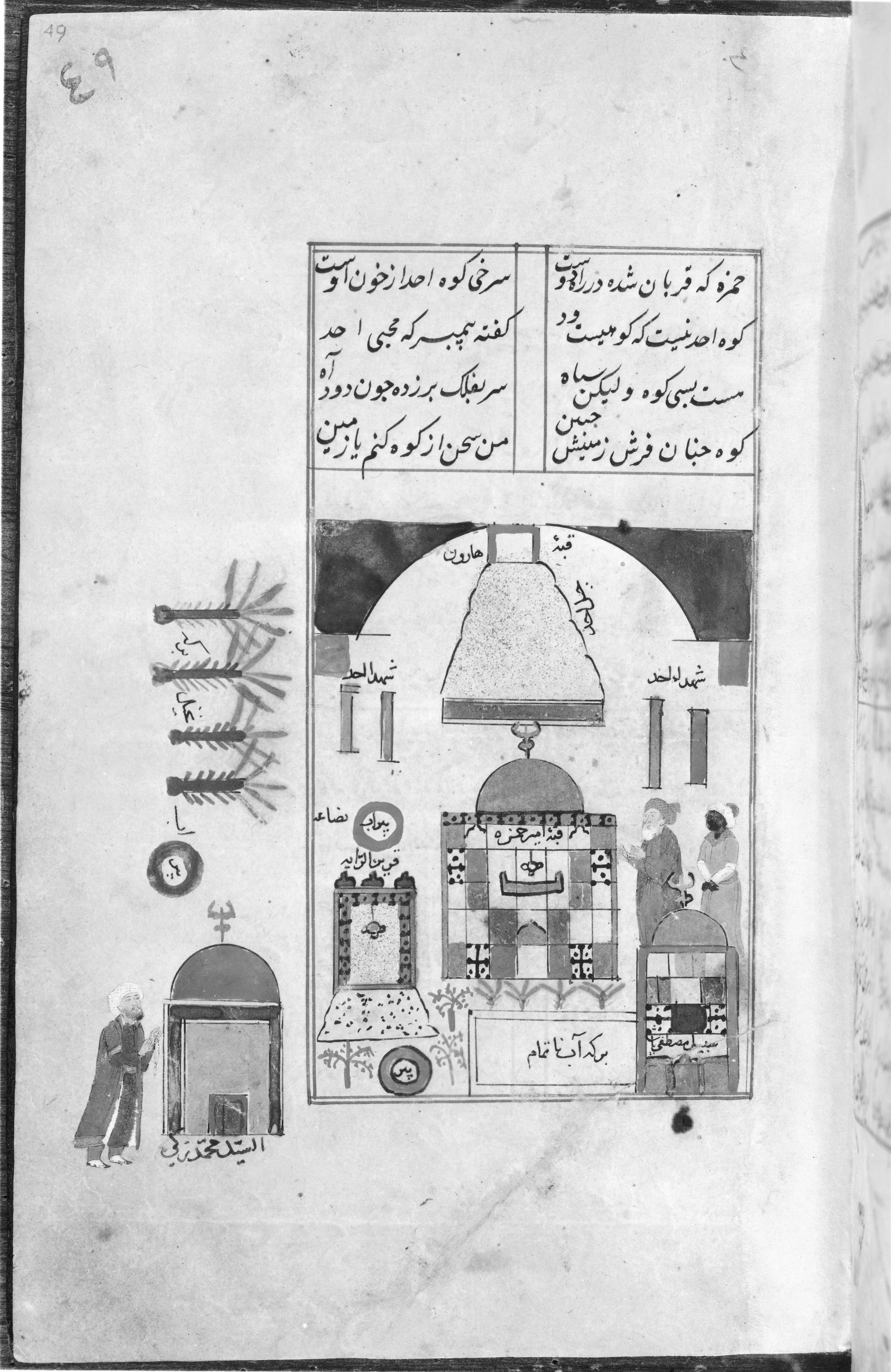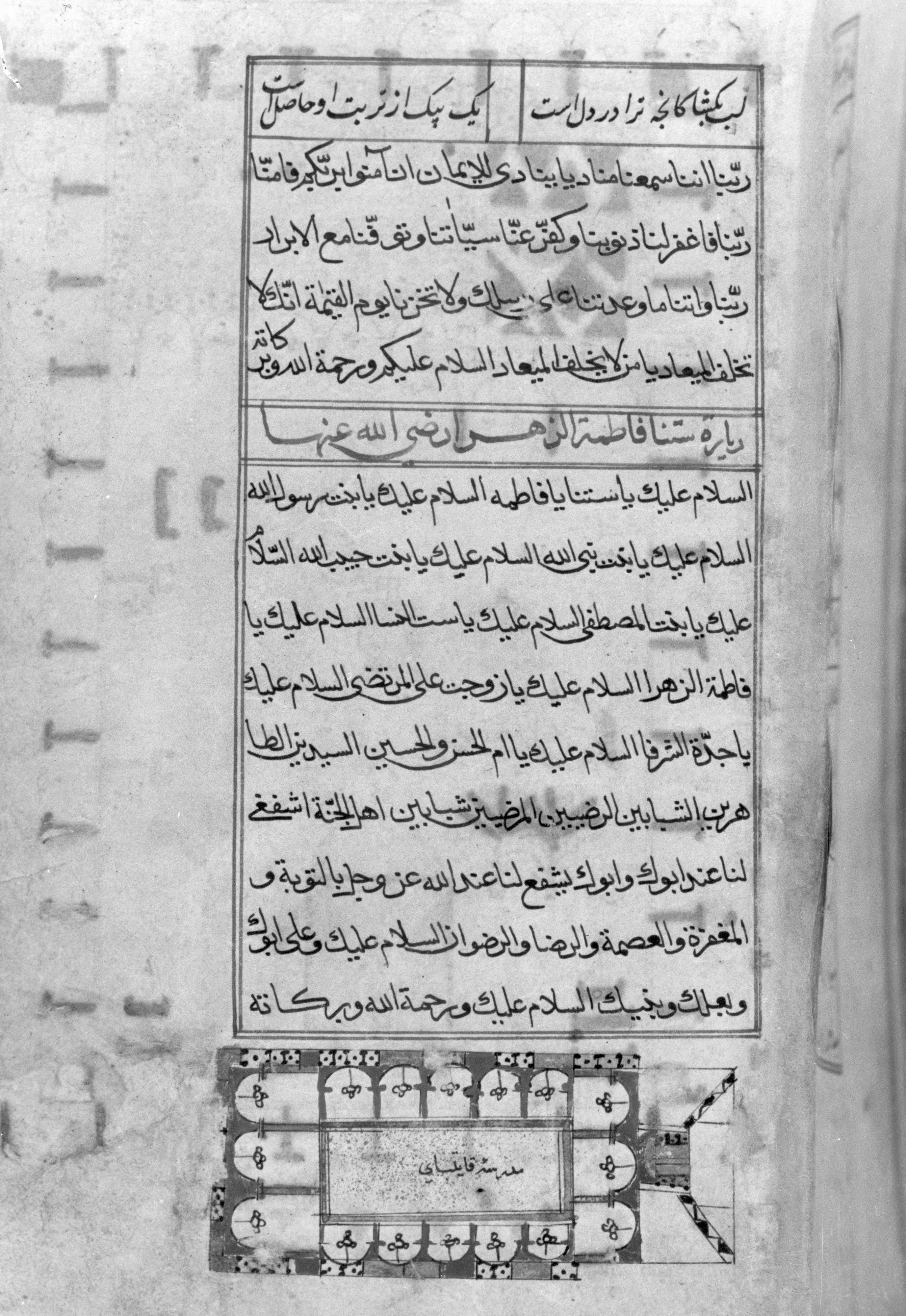Futuh al-Haramain (Description of the Holy Cities)
Author Muhi al-Din Lari Iranian or Indian
The Futuh al-Haramayn is a poetic description of the Holy Cities of Mecca and Medina, composed by Muhi al-din Lari in the early sixteenth century. Often lavishly illustrated, it provides instructions on the hajj pilgrimage rituals and descriptions of important sites Muslim pilgrims can visit. The Futuh was popular in the sixteenth and seventeenth centuries, when it was mainly copied in the Ottoman realm from Mecca to Istanbul, and also in Central Asia and India. Illustrations of sites and buildings are commonly shown from a bird’s-eye view. Symbols and other details enable the reader to identify sites where important miracles of the Prophet and other events took place. Differences in style and quality exist.
Due to rights restrictions, this image cannot be enlarged, viewed at full screen, or downloaded.
This artwork is meant to be viewed from right to left. Scroll left to view more.




